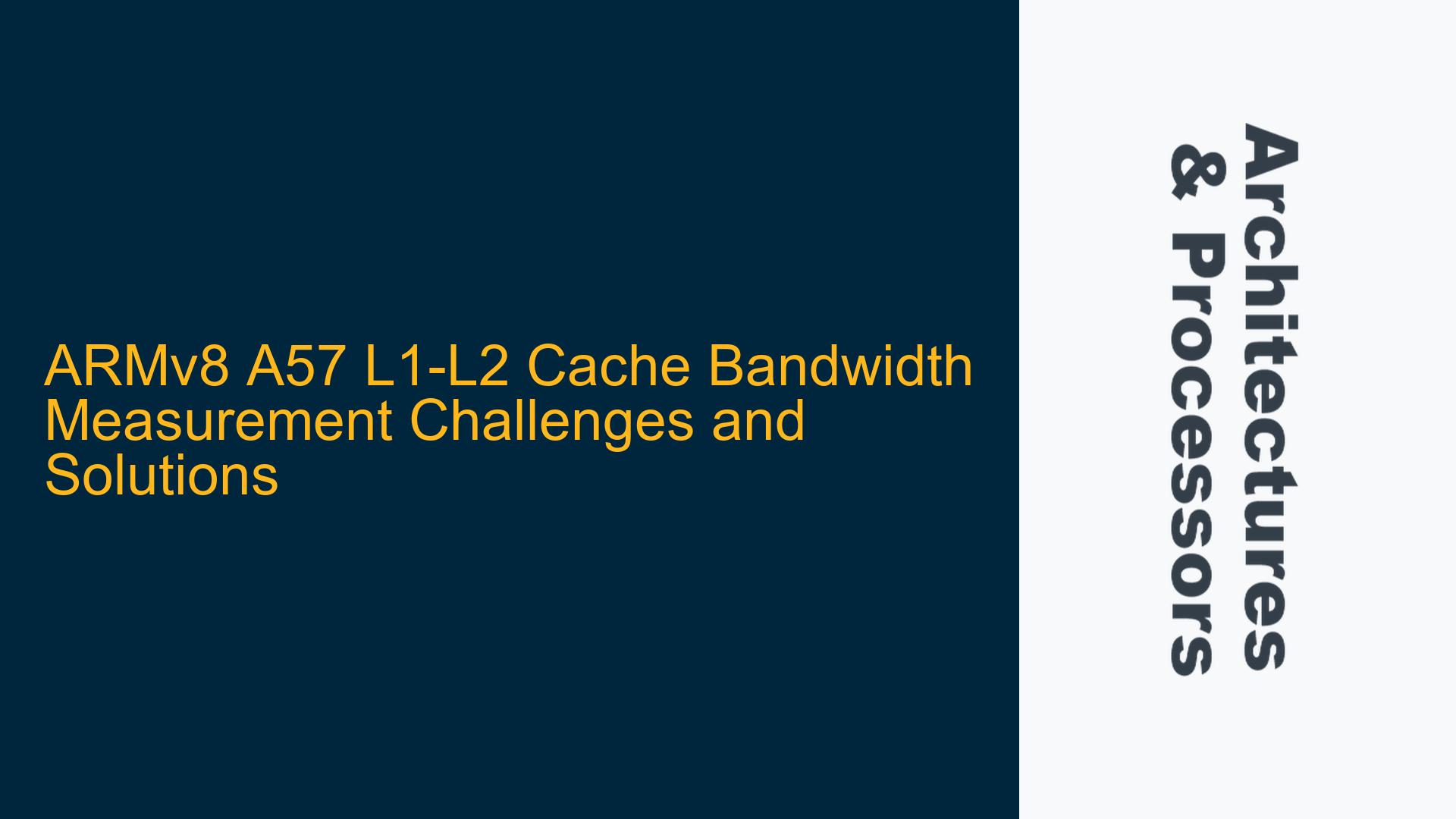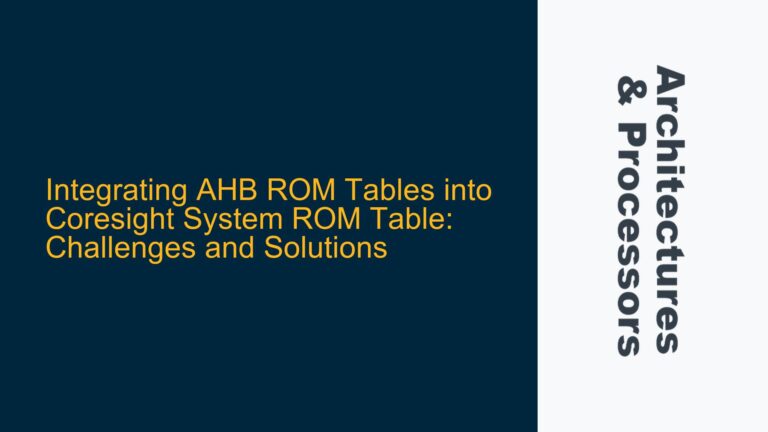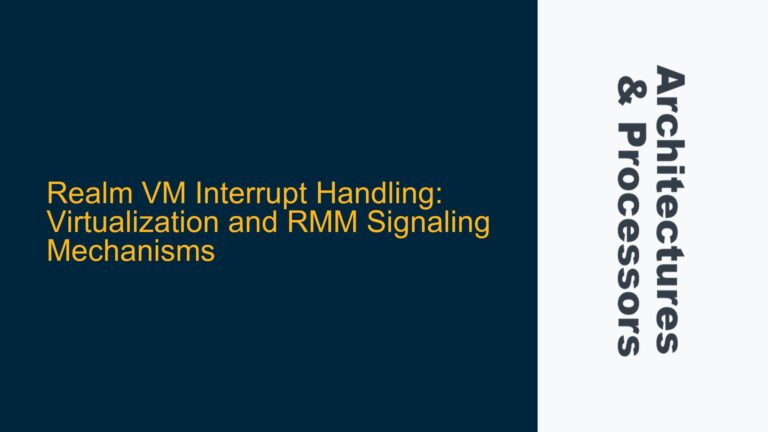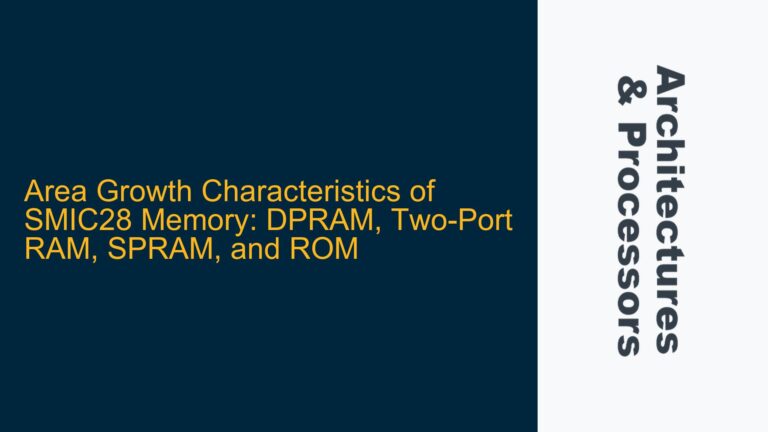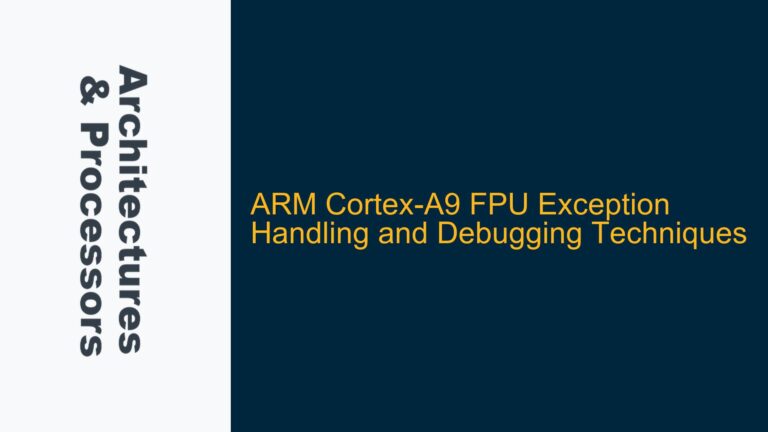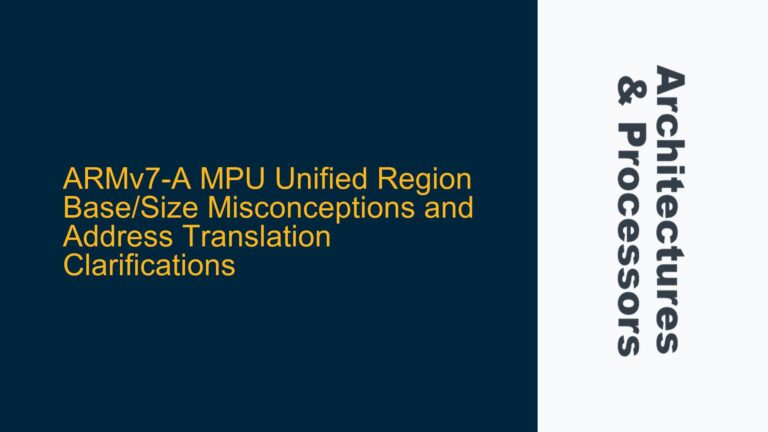ARMv8 A57 L1-L2 Cache Bandwidth Measurement Requirements
The ARM Cortex-A57 is a high-performance CPU core designed for ARMv8-based systems, commonly used in mobile, automotive, and embedded applications. One critical aspect of optimizing system performance is understanding the bandwidth between the L1 and L2 caches. The L1 cache, typically split into instruction (L1I) and data (L1D) caches, is tightly coupled to the CPU core, while the L2 cache serves as a shared intermediate cache between the L1 and main memory. Measuring the bandwidth between these caches is essential for identifying bottlenecks, optimizing data flow, and ensuring efficient utilization of the memory hierarchy.
The ARM Cortex-A57 Technical Reference Manual (TRM) provides detailed information about the cache architecture, including sizes, associativity, and line sizes. However, it does not explicitly specify the bandwidth between the L1 and L2 caches. This omission is not uncommon, as cache bandwidth can vary depending on the implementation, clock frequency, and other system-level factors. Therefore, developers must employ indirect methods to estimate or measure this bandwidth.
The STREAM benchmark is a widely used tool for measuring memory bandwidth, but it primarily focuses on the bandwidth between the CPU and main memory. While it can provide insights into the L1 cache bandwidth by measuring the performance of operations that fit entirely within the L1 cache, it does not directly measure the L1-L2 cache bandwidth. This limitation necessitates alternative approaches to obtain accurate measurements.
Challenges in Measuring L1-L2 Cache Bandwidth
The primary challenge in measuring the L1-L2 cache bandwidth lies in the lack of direct support in the ARM Cortex-A57 TRM and the absence of dedicated performance counters for this specific metric. The ARM Cortex-A57 includes Performance Monitoring Units (PMUs) that can track various events, such as cache hits, misses, and accesses. However, these counters do not directly measure the data transfer rate between the L1 and L2 caches.
Another challenge is the complexity of the cache hierarchy and the interactions between different levels of cache. The L1 cache is designed for low-latency access, while the L2 cache balances latency and bandwidth. The bandwidth between these caches is influenced by factors such as the cache line size, the number of outstanding transactions, and the arbitration policies of the cache controller. These factors make it difficult to isolate and measure the L1-L2 cache bandwidth accurately.
Additionally, the ARM Cortex-A57 employs advanced features such as out-of-order execution, speculative fetching, and prefetching, which can further complicate bandwidth measurements. These features can lead to variations in the observed bandwidth depending on the workload and the specific instructions being executed. Therefore, any measurement approach must account for these factors to ensure accurate and consistent results.
Techniques for Estimating and Measuring L1-L2 Cache Bandwidth
To estimate the L1-L2 cache bandwidth, developers can employ a combination of analytical modeling, microbenchmarking, and performance counter analysis. Each of these techniques has its strengths and limitations, and a comprehensive approach may involve using multiple methods to cross-validate the results.
Analytical Modeling
Analytical modeling involves using the known characteristics of the ARM Cortex-A57 cache architecture to derive an estimate of the L1-L2 cache bandwidth. The key parameters include the cache line size, the number of cache ports, and the clock frequency. For example, if the L1 cache has a 64-byte line size and the system operates at 2 GHz, the theoretical maximum bandwidth can be calculated based on the number of cache lines that can be transferred per cycle.
However, this approach has limitations. It assumes ideal conditions, such as no contention for cache ports and no stalls due to cache misses or other bottlenecks. In practice, the actual bandwidth may be lower due to these factors. Therefore, analytical modeling provides an upper bound on the L1-L2 cache bandwidth but may not reflect real-world performance.
Microbenchmarking
Microbenchmarking involves designing specific workloads that stress the L1-L2 cache interface and measuring the resulting performance. One common approach is to create a loop that repeatedly accesses a small dataset that fits within the L1 cache but is large enough to cause evictions to the L2 cache. By measuring the time taken to complete the loop and knowing the size of the dataset, the bandwidth can be calculated.
For example, a microbenchmark might involve reading and writing a 32 KB array, which is larger than the L1D cache but smaller than the L2 cache. The benchmark can be designed to minimize the impact of other factors, such as branch prediction and instruction fetch, by using simple, predictable access patterns. The bandwidth can then be calculated as the total amount of data transferred divided by the time taken.
Microbenchmarking provides a more realistic estimate of the L1-L2 cache bandwidth compared to analytical modeling, as it accounts for real-world factors such as cache contention and stalls. However, it requires careful design to ensure that the benchmark accurately reflects the desired measurement and does not introduce unintended biases.
Performance Counter Analysis
Performance counter analysis involves using the ARM Cortex-A57 PMUs to track specific events related to cache accesses and data transfers. While the PMUs do not directly measure bandwidth, they can provide insights into the number of cache accesses, hits, and misses, which can be used to infer the bandwidth.
For example, the PMUs can be configured to count the number of L1D cache accesses and L2 cache accesses. By comparing these counts and knowing the cache line size, the amount of data transferred between the L1 and L2 caches can be estimated. Additionally, the PMUs can track the number of cycles spent waiting for cache accesses, which can provide further insights into the effective bandwidth.
Performance counter analysis is a powerful tool for understanding cache behavior, but it requires a deep understanding of the PMU events and their interpretation. It also requires access to the PMU registers, which may not be available in all environments. Therefore, this approach is typically used in conjunction with other methods to provide a more comprehensive view of the L1-L2 cache bandwidth.
Combining Techniques for Accurate Measurement
To obtain the most accurate measurement of the L1-L2 cache bandwidth, it is often necessary to combine multiple techniques. For example, analytical modeling can provide an initial estimate, which can then be refined using microbenchmarking and performance counter analysis. This combined approach allows developers to cross-validate their results and account for the limitations of each individual method.
In practice, this might involve running a series of microbenchmarks with different dataset sizes and access patterns, while simultaneously monitoring the relevant performance counters. The results can then be analyzed to identify trends and correlations, which can be used to refine the bandwidth estimate. Additionally, the analytical model can be updated based on the observed performance, providing a more accurate representation of the real-world behavior.
Practical Considerations and Best Practices
When measuring the L1-L2 cache bandwidth, several practical considerations must be taken into account to ensure accurate and reliable results. These include minimizing the impact of other system components, controlling for variations in workload and system state, and ensuring that the measurement environment is consistent and repeatable.
One important consideration is the impact of other system components, such as the memory controller and the interconnect fabric. These components can introduce additional latency and bandwidth constraints that may affect the measured L1-L2 cache bandwidth. To minimize this impact, it is often necessary to isolate the CPU core and caches from the rest of the system, either by using a dedicated test environment or by carefully controlling the system configuration.
Another consideration is the variation in workload and system state. The L1-L2 cache bandwidth can vary depending on the specific instructions being executed, the state of the cache, and the overall system load. To control for these variations, it is important to use consistent workloads and to repeat the measurements multiple times to ensure consistency.
Finally, it is important to ensure that the measurement environment is consistent and repeatable. This includes using the same hardware and software configuration for all measurements, controlling for external factors such as temperature and power supply, and documenting the measurement process in detail. By following these best practices, developers can ensure that their measurements are accurate, reliable, and reproducible.
Conclusion
Measuring the L1-L2 cache bandwidth in an ARM Cortex-A57-based system is a complex but essential task for optimizing system performance. While the ARM Cortex-A57 TRM does not provide direct information on this metric, developers can use a combination of analytical modeling, microbenchmarking, and performance counter analysis to estimate and measure the bandwidth. By carefully designing their measurement approach and accounting for the various factors that can influence the results, developers can obtain accurate and reliable measurements that can be used to identify and address performance bottlenecks in their systems.
